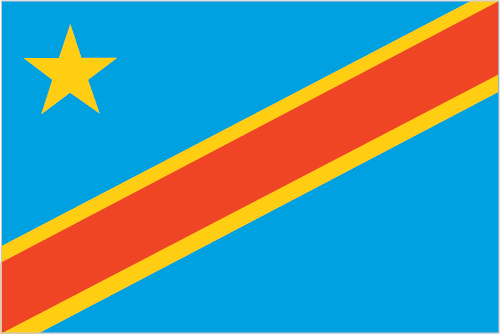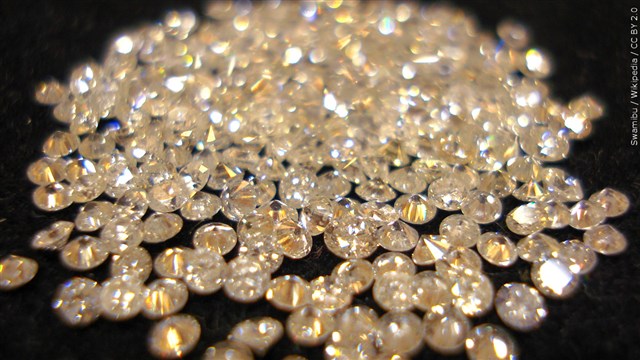Despite being rich because of $24 trillion in mineral resources that are ready to be turned into consumer electronics and batteries in electric cars for Western industrialized democracies, the population of the Democratic Republic of Congo (DRC) is one of the poorest in the world.
In fact, according to the World Bank, the DRC is among the five poorest nations in the world. In 2022, nearly 62 percent of DRC’s nearly 99 million people lived on less than $2.15 a day. In addition, despite the DRC using hardly any fossil fuels it’s one of the largest sources of emissions in Africa.

In its long-running series profiling countries with the highest greenhouse gas emissions, the interactive CarbonBrief.org in its February 2024 edition noted that the DRC’s land and forests are still a “carbon sink” overall. “… human-caused land-use changes release large volumes of carbon dioxide (CO2) and make the DRC the world’s 12th biggest greenhouse gas emitter, as of 2018,” the reported stated.
In a 2018 study CarbonBrief.org reported, that “based on satellite imagery of the region [it] found that more than 90% of deforestation in the DRC was attributable to small-scale shifting cultivation.”
The DRC is one of the richest countries in the world in terms of natural resources. It is home to a wealth of mineral and precious metal deposits. Its extractive industries comprise nearly 90 percent of the country’s exports and nearly half of its government’s revenue. Chief among those exports is cobalt, copper, gold, diamonds and coltan, which is an ore of the metals of niobium and tantalum.

CNBC’s business channel’s news site called the African country’s mineral resources “conflict minerals.” All the country’s minerals, including tantalum, tungsten and gold are found in the electronics manufactured in Western nations “and all are considered conflict minerals, due to their potential origin in the Democratic Republic of Congo.
While the African country contains an estimated $24 trillion in untapped mineral resources, it remains mired in poverty and violence, and mining these four metals can help fund armed conflict in the region,” CNBC reported.
While Western media frames the natural resources of the DRC as a source of conflict, it simultaneously reports that the Global North nations depend on these mineral resources to maintain their industrialized societies.
These metals are integral to Western consumer electronics. In smartphones, for example, tin is used to solder metal components together, while tantalum is used in capacitors that store electrical energy. Tungsten is used in the components that make a phone vibrate, and gold is used in circuit board connectors.
Meanwhile, according to liberationnews.org, the DRC captures very little of the overall value of its products. “In 2022, the country had a GDP of $64.7 billion, with at least $4.3 billion in illicit financial flows. The global tech industry made roughly $5 trillion in revenue in 2022. Apple (Computer), Alphabet and Samsung, just three of the scores of multinationals who couldn’t exist without the DRC’s minerals, made $156.7 billion in profit—more than double DRC’s official GDP.
Despite the fact that without the Congo and its labor and resources, there would be no electric cars—with the average price of an EV in the United States in 2022 at $61,448—miners in the DRC might make just below $3,000 a year. Some are working for far less, or caught in a form of modern slavery,” the website reported.
The history of rape and plunder of the DRC and its natural resources goes back to the turn of the century to Belgium’s King Leopold II. Despite never stepping foot in the Congo, he outright owned the country for two decades and was criticized during his lifetime for the cruel policies that he implemented by extracting rubber from the country and the millions of Congolese he slaughtered and disfigured in the process.
During World War II there was a race between the U.S. and the Soviet Union to gain military superiority. The Congo again came into the picture with the U.S. involved in mining the country’s mineral resources. This time it was uranium for the building of atomic weapons, that would in the early years of the Cold War, give the U.S. military superiority.
In the 2021 book “White Malice: The CIA and the Covert Recolonization of Africa: The Congolese Miners in the Shinkolobwe Mine” written by Susan Williams, she wrote about the fallout on the people from mining efforts.
They “were vulnerable to many adverse heath effects caused by uranium, explained Jean Bele, a Congolese nuclear physicist at MIT’s Laboratory For Nuclear Science. He pointed to a spectrum of such effects, ‘ranging from renal failure and diminished bone growth to damage to DNA,’” Williams wrote.
Follow @JehronMuhammad on X, formerly Twitter













